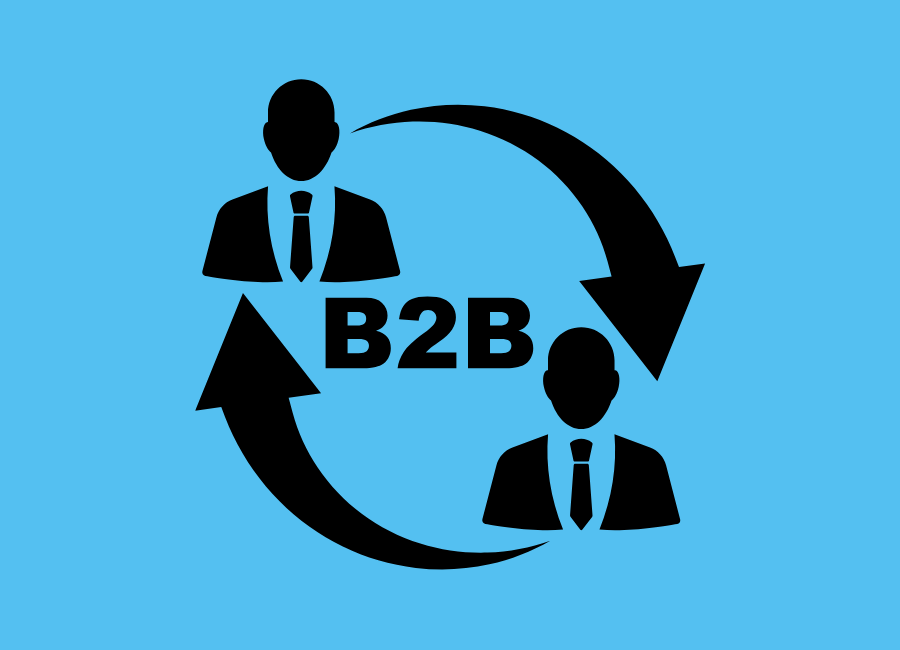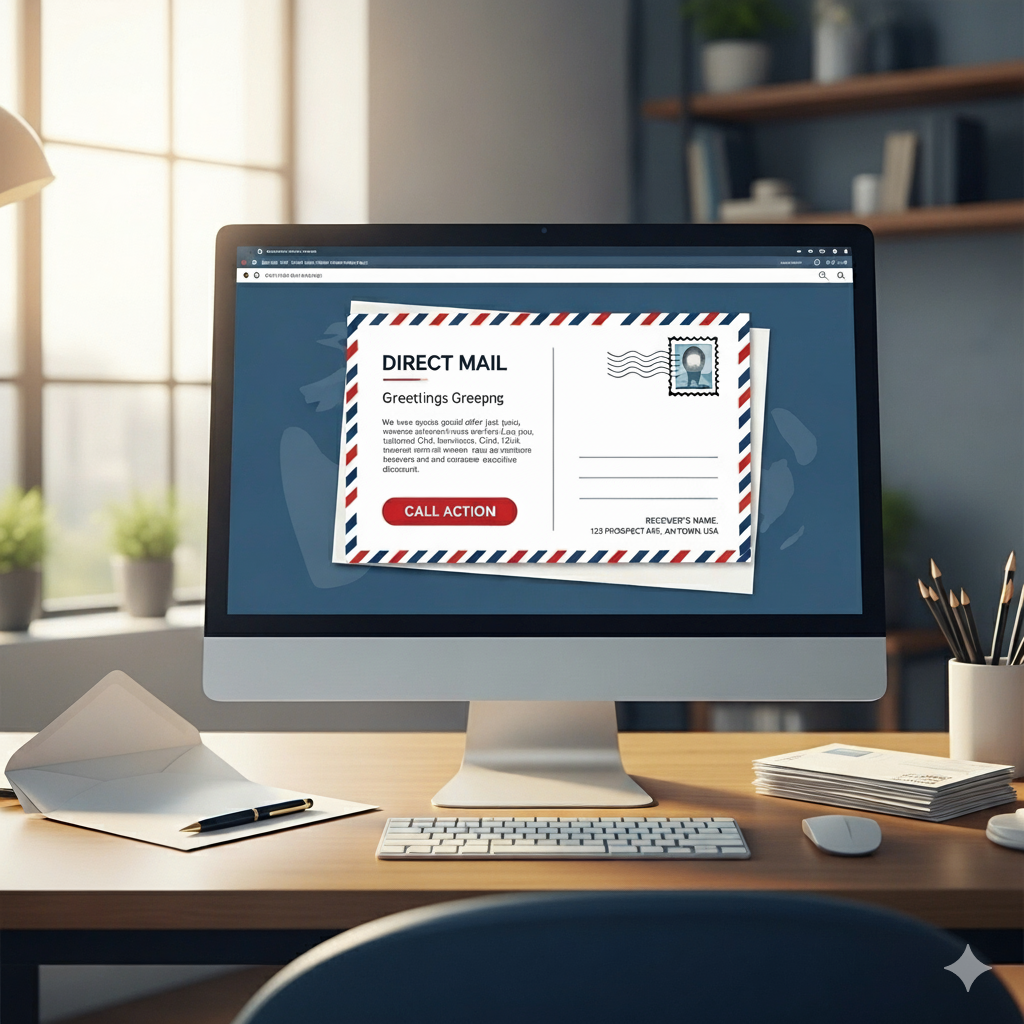
In 2025, B2B healthcare marketing is louder than ever—emails, ads, and endless digital touchpoints compete for attention. So why does Direct Mail still matter? Because in a hyper-digital world, physical outreach feels different. A well-designed mailer sent to a hospital administrator or physician cuts through inbox clutter, builds instant trust, and sticks in memory.
For healthcare brands, Direct Mail campaigns aren’t about old-school postcards anymore. They’ve evolved into data-driven, HIPAA-compliant strategies powered by verified healthcare database.
This guide breaks down why direct Mail remains effective, how it fits into omnichannel strategies, and what healthcare marketers need to know to unlock real ROI in 2025.
What is Direct Mail in B2B Healthcare?

Direct Mail in B2B healthcare is the practice of sending physical marketing materials—such as letters, brochures, postcards, and even 3D mailers—directly to decision-makers, including physicians, hospital administrators, and lab directors.
Unlike generic mass mail, modern campaigns are powered by precise healthcare databases that ensure every piece reaches the right audience.
Definition of Direct Mail
Traditionally, Direct Mail meant printed flyers or catalogs sent to broad lists. In 2025, it’s a data-driven channel that blends personalization, compliance, and digital integration. Consider QR codes that direct users to custom landing pages or brochures tailored to a specialist’s practice. It’s no longer “old school”—it’s measurable, trackable, and smart.
Why Healthcare Brands Still Use It
Healthcare decision-makers often operate in high-stakes, highly regulated environments where trust and privacy are of paramount importance. Direct Mail marketing feels more tangible than email and avoids digital fatigue.
Additionally, it aligns with compliance standards such as Can-Spam, GDPR & HIPAA when paired with verified contact data. That’s why many healthcare companies still invest in personalized Direct Mail campaigns—it earns attention and builds credibility in ways digital ads can’t.
The Role of Direct Mail in B2B Healthcare Marketing
In B2B healthcare, relationships are everything. Direct Mail gives marketers a way to reach decision-makers with something tangible—something that stands out in a digital-first world. Whether it’s a physician flipping through a personalized brochure or a hospital admin holding a tailored postcard, physical outreach creates credibility that digital channels struggle to match.
Building Trust with Decision-Makers
Healthcare leaders manage sensitive data, oversee high budgets, and are responsible for patient outcomes. A printed, compliance-safe message feels more reliable than another email in an overcrowded inbox. Direct Mail builds trust by showing effort, care, and professionalism—qualities decision-makers respect.
Personalization and Relevance
Thanks to healthcare databases, campaigns can be hyper-targeted. Instead of a generic blast, marketers can send a cardiologist a mailer about surgical equipment or a lab director a custom case study. Personalization makes the outreach not just relevant, but valuable.
Compliance & Privacy in Direct Mail
Healthcare is governed by strict laws—HIPAA, GDPR, and CAN-SPAM all shape how marketing is done. Direct Mail works well because when verified data power it, it respects privacy while still delivering impact. That balance of personalization + compliance is why brands continue to lean on it.
Direct Mail Strategies That Work in 2025
In 2025, Direct Mail is less about mass mailers and more about precision. Healthcare brands that succeed are those that utilize data, creativity, and integration to create unforgettable campaigns. Here’s what’s working now:
Data-Driven Targeting with Healthcare Databases
The secret sauce is verified healthcare databases. Instead of generic outreach, marketers can target cardiologists in New York or hospital procurement managers in London. Clean, segmented data ensures every mailer feels personal—and compliant.
Creative Formats (Postcards, Brochures, 3D Mailers)
Flat letters still work, but engagement skyrockets with creative formats. A 3D mailer, a foldout brochure, or even a custom-branded kit instantly grabs attention. In healthcare, where trust and credibility are paramount, design is an integral part of the message.
Integrating Direct Mail with Digital Channels
The best campaigns don’t stop at the mailbox. Pairing Direct Mail with LinkedIn outreach, email nurturing, or retargeting ads creates a seamless omnichannel experience. Imagine a postcard with a QR code that directs a hospital CFO to a custom video—offline meets online in one smooth step.
Tracking & Measuring ROI
Gone are the days of guessing. In 2025, every Direct Mail piece can be trackable: QR codes, personalized URLs, response hotlines, or unique offer codes. Marketers can measure open rates, scans, and conversions just like digital ads—making ROI crystal clear.
Challenges of Direct Mail in B2B Healthcare
Even with all its strengths, Direct Mail isn’t a plug-and-play fix. Healthcare brands face some hurdles that need smart planning. Knowing these challenges upfront helps marketers design campaigns that actually work, rather than burning their budget.
Cost Considerations
Printing, postage, and creative design make Direct Mail more expensive than sending an email blast. But when lists are small and highly targeted, the ROI often justifies the spend. Think of it less as “extra cost” and more as “higher-value investment.”
Scalability vs. Hyper-Personalization
Direct Mail thrives on personalization, but scaling that across thousands of contacts can get complex. Healthcare marketers need a balance—automation tools help manage scale, while verified healthcare databases ensure accuracy and reliability.
Navigating Compliance & Data Accuracy
In healthcare, one wrong address or non-compliant outreach can mean wasted dollars—or worse, legal headaches. Staying aligned with HIPAA, GDPR, and CAN-SPAM requires that every campaign uses clean, verified data. The good news? Modern Direct Mail platforms and trusted data providers make this a lot easier than it used to be.
Future of Direct Mail in Healthcare Marketing
Far from fading, Direct Mail is leveling up in 2025. With AI, automation, and hybrid experiences leading the way, the channel is entering a new era where physical and digital marketing work together, rather than competing.
AI + Automation in Direct Mail Campaigns
AI is transforming how mail campaigns are built. Predictive models can identify which hospital administrators or physicians are most likely to respond, while automation tools handle personalization at scale. That means smarter targeting, faster execution, and higher ROI.
Hybrid Experiences
The future isn’t offline vs. online—it’s both. Imagine a physician receiving a printed case study with an embedded QR code that opens a tailored digital portal. Or a hospital CFO scanning a mailer that launches a personalized video. These hybrid experiences make Direct Mail interactive in ways email alone can’t match.
Why Direct Mail is Having a Comeback
As digital noise continues to grow, response rates for Direct Mail are quietly rising in niche B2B healthcare marketing. Marketers are rediscovering that when done with data, creativity, and compliance, Direct Mail doesn’t just survive—it thrives. It’s not retro, it’s relevant.
To maximize the impact of Direct Mail, healthcare marketers need accurate, compliant contact data. Explore our verified healthcare email lists to power campaigns with precision.
Get Verified B2B Healthcare DataConclusion
In 2025, Direct Mail proves it’s not a relic of the past but a growth driver for B2B healthcare marketing. By combining personalization, compliance, and smart integration with digital channels, it delivers trust and engagement where other tactics fall flat.
The real win comes when Direct Mail is part of a hybrid strategy—offline touchpoints paired with email nurturing, LinkedIn outreach, or retargeting ads. This blend creates memorable experiences that decision-makers can’t ignore.
For healthcare marketers seeking to cut through the noise and achieve real ROI, Direct Mail deserves a seat at the table. The question isn’t if it works—it’s how fast you integrate it into your next campaign.
FAQ's
Why does Direct Mail still work in B2B healthcare marketing in 2025?
Direct Mail cuts through digital noise by giving decision-makers a tangible, trusted touchpoint. When powered by accurate healthcare databases, it delivers higher engagement and stronger recall than email alone.
Is Direct Mail HIPAA and GDPR compliant for healthcare campaigns?
Yes—when paired with verified and permission-based data, Direct Mail marketing aligns with HIPAA, GDPR, and CAN-SPAM. Compliance is about using clean lists and secure processes, not avoiding the channel itself.
How do healthcare companies measure ROI from Direct Mail?
Modern Direct Mail uses QR codes, personalized URLs, and unique offer codes to track responses. This makes ROI measurable in the same way as digital campaigns—clear, data-backed, and transparent.
What’s the best way to combine Direct Mail with digital marketing?
The strongest results come from an omnichannel strategy—pairing Direct Mail with LinkedIn outreach, email nurturing, and retargeting ads. Each touchpoint reinforces the other and accelerates conversion.
Do I need a specialized healthcare email list for Direct Mail campaigns?
Absolutely. Accurate, compliant healthcare email lists from MedicoLeads ensure your mailers reach the right physicians, administrators, or specialists. Without clean data, personalization and ROI drop significantly.
